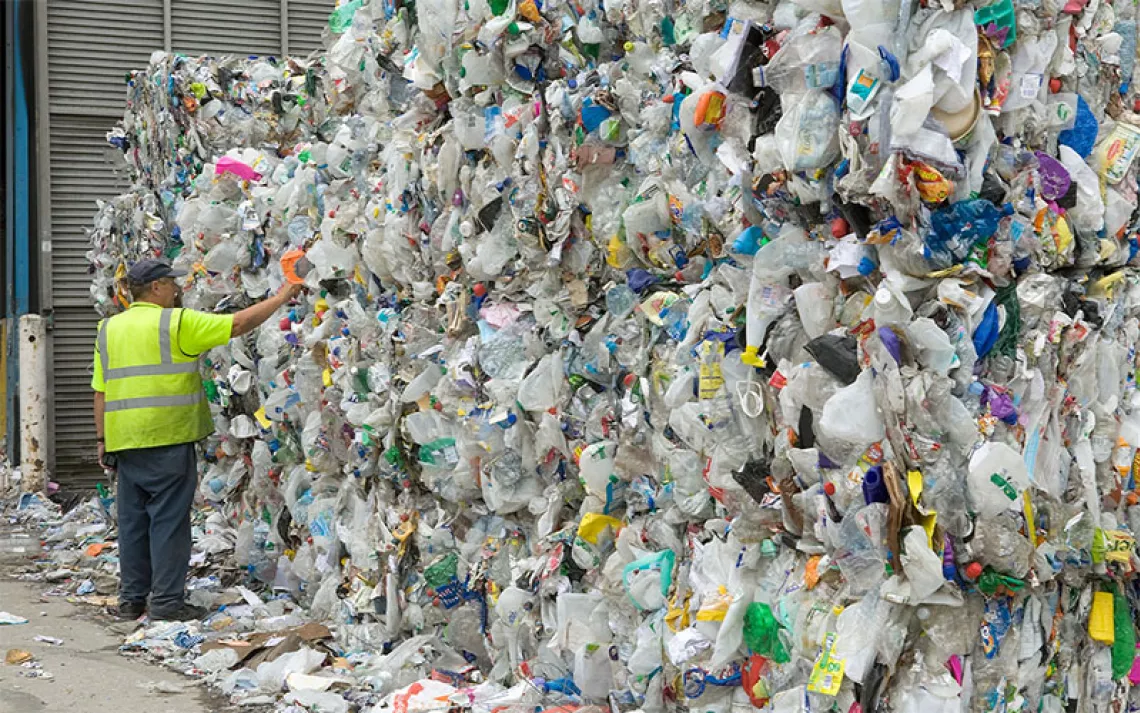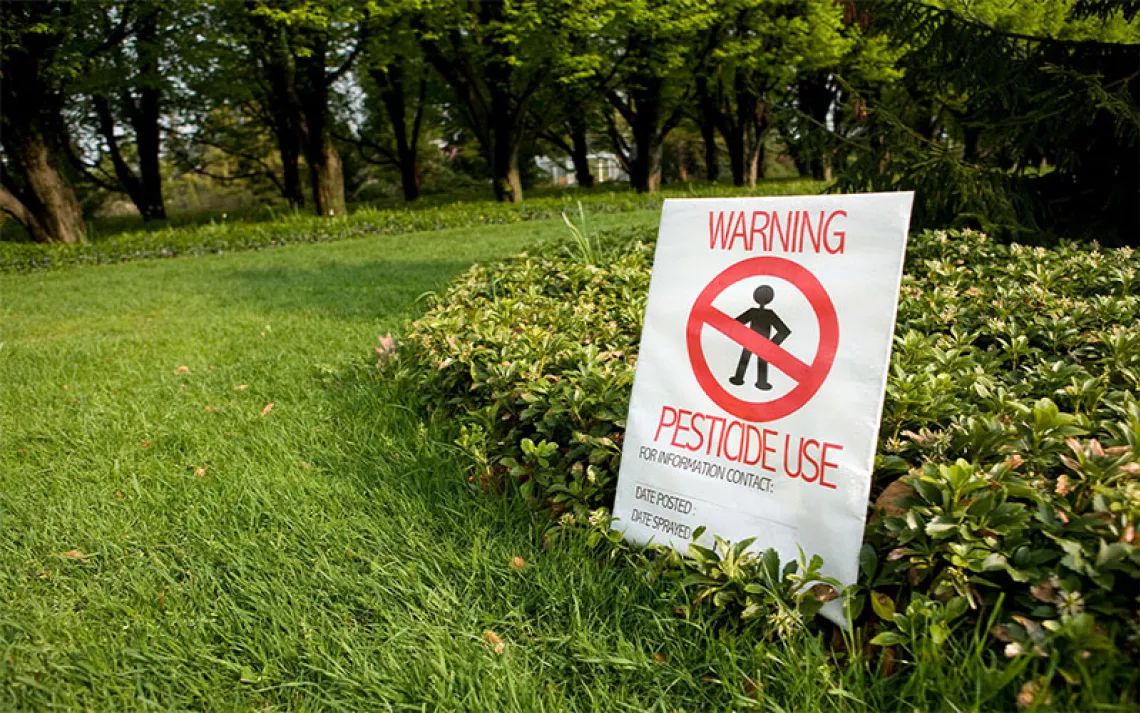Frontline Communities Fight to Evict a Toxic Roofing Company
One of America’s largest shingle makers is pumping pollution into Black and brown communities from Texas to Minnesota

Janie Cisneros (left), who leads Singleton United/Unidos, sits with four others in front of GAF on Earth Day 2024. The action was planned to raise awareness for a campaign aimed at closing down a shingles factory, one of the largest polluters in Dallas. | Photo by Johnathan Johnson
A year ago, Alap Dave found his dream house on Singleton Avenue in West Dallas. When he went to see the house for the first time, he noticed a shingle factory across the street, but he couldn’t smell any pollutants or toxins.
After he moved in, he noticed that when the facility, owned by GAF Roofing, started up, it released fumes into the air that stung his nostrils. “It’s like rotten eggs and sewage combined,” Dave says. “It’s worse than any of my old stinky soccer cleats.” Asphalt is a type of crude oil byproduct—a thick, tarlike substance that’s mixed with other products. It’s mainly used to make shingles and pave roads. According to an analysis by Paul Quinn College’s Urban Research Initiative, in 2022, GAF was one of the largest sources of sulfur dioxide pollution in Dallas County and the fifth-largest polluter overall.
Dave is new to the neighborhood, but since the GAF plant has been operating for nearly a century, some residents have been breathing those fumes for their entire lives. And they’ve paid the price. A recent public health study conducted by Texas A&M University found that residents near the plant are exposed to some of the worst particulate matter pollution in the Dallas area. Asthma rates here are five times the statewide average. Rates of respiratory illness, like COPD, are also elevated here.
For Dave, a climate organizer with the Sunrise Movement, moving to Singleton Avenue was a crash course in environmental justice. He quickly connected with Janie Cisneros, the founder of Singleton United/Unidos—a grassroots group that’s been pushing to get GAF out of the neighborhood for years. “In advocacy with Sunrise, it looked like going to City Hall and speaking with staff,” he says. “Working with Janie, we went door to door, [knocking] on people’s doors to talk about the impacts of the plant.”
Last summer, he traveled to Minneapolis with other members of the environmental justice group to visit a neighborhood called Bottineau, where residents are fighting a similar battle against GAF. There, another working-class, predominantly Black and brown residential neighborhood had been exposed to the same fumes for decades. During the visit, Singleton United joined forces with the Bottineau Neighborhood Association, which represents community members in Minneapolis who live in the shadow of the plant. The two groups staged a protest outside the facility in August, calling attention to the environmental injustices residents in both communities faced. The stench in Minneapolis was nearly identical to what Dave had grown accustomed to in Dallas. “It smelled like home,” Dave says.
Dozens of protesters marched around the facility, holding signs proclaiming “Minnesota to Texas: GAF has gotta go” and “Neighborhood health, not corporate wealth.” With the plant in the background, one resident made an impassioned speech about the pollution that has plagued Bottineau for decades and the long-term health impacts, saying, “I thought I was making it up, but this is real.” The crowd cheered and clapped in agreement. “This is not where a plant should be,” she said.
The coalition between the two cities came after residents tried everything to get the major polluter out of their backyards. Members have spent years advocating at city halls, writing letters to state environmental agencies and the Environmental Protection Agency, and protesting at the plants. Yet even armed with the data showing elevated levels of cancer in neighborhoods closest to GAF’s Bottineau facility, the advocates’ pressure campaigns failed to convince the company to move out or clean up, says Nancy Przymus, a community organizer with the Bottineau Neighborhood Association. The Minneapolis group first started sending letters to the EPA in 1995.
For Cisneros, the feeling of finding activists fighting the same fight and speaking the same language—the health studies and pollution analyses, the letters to city leaders—was astounding. “It was like looking in a mirror,” she says. “We were seeing our struggle reflected in a completely different city.” After a month of conference calls to organize the event, she wasn’t able to attend the solidarity protest in Minneapolis because she was supposed to appear in court over charges related to an Earth Day protest a few months earlier. In April, Cisneros and other activists with Singleton United had blocked the entrance to GAF, shutting down the Dallas facility’s operations for the day, and they received citations from the city for their acts of civil disobedience.
Together, the Bottineau Neighborhood Association and Singleton United are calling for a national boycott of GAF’s asphalt shingles. “We did it all; we tried everything,” Pryzmus says of the studies, letters, and protests. “The facts don’t matter unless we can affect their bottom line. GAF has got to go. But if this isn’t nationwide, this doesn’t work.”
GAF certainly has an incentive to keep operating its plants, even if local residents want them shut down: The asphalt shingle industry will be worth $11 billion by 2027, and GAF is one of the largest manufacturers in the country. The company claims that one in four homes in the US have a roof made up of their shingles.
In a recent letter to the EPA this summer, the two groups asked the federal agency to step in and implement stricter regulations against the industry and phase out existing plants in urban neighborhoods. But because of a major loophole in the Clean Air Act, Bottineau and Singleton residents face an uphill battle when it comes to cleaning up GAF’s pollution. Since the plants were built before the federal law was signed in 1963, they weren’t required to immediately upgrade their pollution controls and technologies to meet new, lower emissions limits. GAF acquired both plants in the late 1960s, but the plants had been operated by different companies for decades before that.
Companies had successfully argued that requiring existing plants to conform to the new law could bankrupt industries and cause millions of dollars in economic losses. And so plants like GAF were grandfathered in: As long as they didn’t significantly alter their processes, they could keep renewing their main operating permits, year after year, without updating them. “You get this pattern where a facility gets to keep complying with old standards for quite a long time until they make a significant change at their facility,” says Kelly Haragan, an environmental law professor at the University of Texas at Austin.
The GAF facilities are also exempt from technology reviews requiring the company to install what’s known in the industry as “best available control technology”—cost-effective, modern scrubbers that trap pollutants, for example. “There’s nothing stopping the states from stepping in and having more stringent requirements,” Haragan says. “There’s an argument in places like this that you shouldn’t just be issuing permits. They should be including provisions to make sure the permit is actually protective of public health.”
In a statement, a GAF spokesperson characterized the communities’ claims of excess pollution that harms residents’ health as “false,” “offensive,” and “irresponsible.” The company pointed to a 2022 press release from the Minnesota Pollution Control Agency, stating that it had voluntarily installed more advanced pollution controls when they were not required.
While the impacts of the Clean Air Act loophole on shingle factories haven’t been researched thoroughly, its impacts on other industries are more well-known. For example, a 2022 paper from the Institute for Policy Integrity at New York University looked at the impact of grandfathering in coal boilers. The study found that old boilers, which might otherwise have been retired or upgraded, led to an additional two pounds of sulfur dioxide emissions per megawatt of power generated—a 70 percent increase that could have been avoided with new technologies.
At the neighborhood level, closing the loophole could dramatically improve residents’ quality of life—not just in Dallas and Minneapolis but across the country. Much of the organizing to completely shut down GAF will still have to happen at the local level, Cisneros says, by using local zoning laws or nuisance ordinances, for example.
“The vision is to highlight the environmental racism that we’re all experiencing and push for more national regulation,” Cisneros says. “When you have so many people crossing state lines, asking for the same things, telling you about the same problems, you can’t look away. This isn’t one state’s problem.”
 The Magazine of The Sierra Club
The Magazine of The Sierra Club



